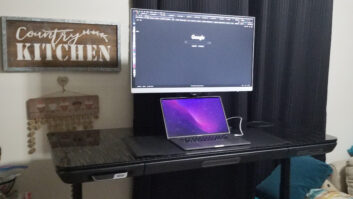New York – Bang & Olufsen of
America (BOA) has stepped up the pace of product introductions and consumer
advertising in the U.S.
following a 2008 to 2009 restructuring by its corporate parent and the adoption
of a more focused product strategy.
From late last year through this summer, BOA will have shipped
six new products, said BOA president Zean Nielsen during a press briefing on
some of the new products. Now that new products are hitting Bang & Olufsen-branded
stores, he said, the company has begun ramping up its advertising schedule with
ad placements in The New York Times, Wall Street Journal, Boston Globe, San
Francisco Chronicle, Toronto Globe and Mail, and Canada’s National Post. In North America, the company’s ad schedule had been “light”
because the company was putting resources into new product development, he
added.
The luxury brand’s new products include the BeoCom 5 DECT 6.0
cordless phone, shipping in volume at the end of March following a November
prelaunch; the company’s first alarm clock, the BeoTime, which shipped about
three months ago; the 55-inch
, which shipped in January; the 40-inch BeoVision 10 LCD TV,
shipping in May to June; a 46-inch BeoVision 10 LCD TV due later in the summer;
and a planned audio product to be disclosed in the coming weeks. The products
are sold through 47 B&O-branded stores in North
America.
In late 2008, BOA’s parent launched a worldwide restructuring,
which left BOA largely unscathed, and a new product strategy that, among other
things, reduced the number of digital platforms per core category in future
products to accelerate product development and increase sales and marketing
efficiencies. The strategy also focused R&D
resources on three core categories — TV/video, audio (home and OEM car), and
home integration — to deliver higher profits from fewer product categories and
to accelerate product development. The company also decided on a global basis
to drop such non-core products that the company didn’t manufacture in-house.
Those products included MP3 players, cellphones, DVD players and stand-alone
hard-drive recorders.
The company remains in the cordless-phone category and launched
its first alarm clock, Nielsen said, because those products are manufactured
in-house, ensuring quality control, faster time to market and ability to
integrate with core B&O products. The cordless phone, for example, features
integrated IR remote to control the volume of B&O TVs and audio systems.
In its fiscal year ending May 2008, B&O globally posted a
profit but fell into the red for the year ending May 2009. For the year ending
May 2010, the company forecasts it will post a much narrower loss or possibly
break even.













